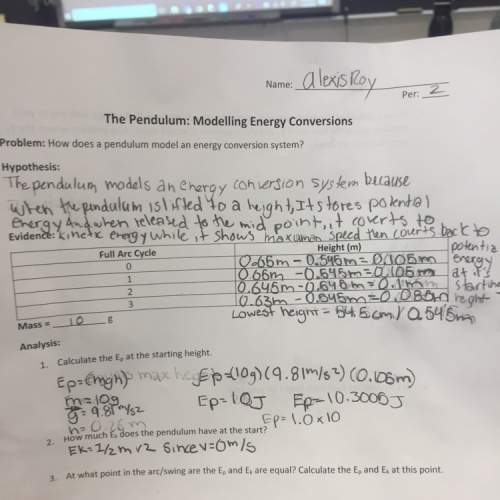
Physics, 21.01.2020 22:31 zakarycrane8101
At t = 15.0 seconds an object with mass 6 kg was observed to have a velocity of ‹ 9, 25, −9 › m/s. at t = 15.1 seconds its velocity was ‹ 18, 17, 21 › m/s. what was the average (vector) net force acting on the object?

Answers: 2


Other questions on the subject: Physics

Physics, 22.06.2019 03:50, Jasten
The intensity of a polarized electromagnetic wave is 12 w/m^2. part a) what will be the intensity after passing through a polarizing filter whose axis makes the angle θ=0∘ with the plane of polarization? part b) what will be the intensity after passing through a polarizing filter whose axis makes the angle θ=30∘ with the plane of polarization? part c) what will be the intensity after passing through a polarizing filter whose axis makes the angle θ=45∘ with the plane of polarization? part d) what will be the intensity after passing through a polarizing filter whose axis makes the angle θ=60∘ with the plane of polarization? part e) what will be the intensity after passing through a polarizing filter whose axis makes the angle θ=90∘ with the plane of polarization?
Answers: 1

Physics, 22.06.2019 14:40, kellypechacekoyc1b3
Asolid cylinder and a cylindrical shell have the same mass, same radius, and turn on frictionless, horizontal axles. the cylindrical shell has light-weight spokes connecting the shell to the axle. a rope is wrapped around each cylinder and tied to blocks of equal masses that are held the same height above the ground. both blocks are released simultaneously. the ropes do not slip. which block hits the ground first? or is it a tie?
Answers: 3


Physics, 23.06.2019 00:00, jumana3
Does the distance travelled by an oscillating mass between times t=0 and t2 equal the displacement of the particle over the same time period if t2> t/2? hint: consider a sine wave starting at t1=0, then consider a closing wave starting at t1=0, for your explanation.
Answers: 1
You know the right answer?
At t = 15.0 seconds an object with mass 6 kg was observed to have a velocity of ‹ 9, 25, −9 › m/s. a...
Questions in other subjects:

Physics, 06.08.2021 14:00

Mathematics, 06.08.2021 14:00



Biology, 06.08.2021 14:00


Mathematics, 06.08.2021 14:00



English, 06.08.2021 14:00




